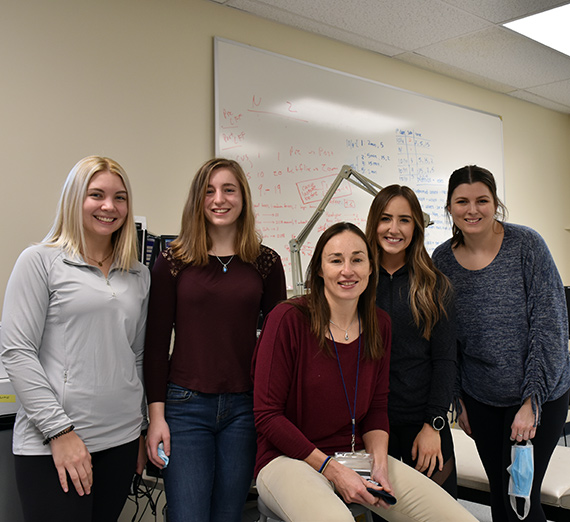Picture a Scientist, or an Engineer, Human Physiologist or Nurse Leader: Smart, Innovative, Female

An October presentation of the documentary “Picture a Scientist” and subsequent panel discussion on women in science raised the important question for faculty and students, “How do we engage more women in the STEM areas at Gonzaga?”
Organized by Human Physiology Assistant Professor Elise Donovan, the discussion focused on the representation of women in science, and biases and obstacles women face either getting there or experience after they’ve arrived.
“The analogy from the movie is an iceberg, and the gist of the conversation was this: It’s easy to see the big issues like blatant discrimination and harassment which are above the surface, but below the surface there are more subtle issues that you might not always see or be aware of,” Donovan said.
She cited lots of barriers to women in science, including but not limited to, implicit bias, lack of opportunities, lack of representation and fewer resources than their male counterparts, in some cases.

“We need to be willing as individuals, departments and institutions to see where some of those challenges lie in our organizations, identify our own implicit biases, and develop cultures that promote inclusivity of women at the table. A diversity of ideas is important, and a culture where microaggressions and biased behaviors can be addressed when they happen,” Donovan added.
Panelist Shannen Cravens, assistant professor of chemistry and biochemistry, expressed joy in talking about the topic. “This subject is on the minds of faculty and female students. Student response to the documentary and panel discussion was overwhelmingly positive,” she said.
Some of the barriers include historic impressions of women in the kitchen, not in the lab, and women starting with fewer rights than men. “It is women who are generally expected to take time off for family leave when they are giving birth or caring for sick kids. There is a disconnect between expectations for women and expectations for men,” Cravens said.
Fellow panelist Carla Bonilla, Biology associate professor, suggested traditionally female roles are prevalent at Gonzaga, from note taking at meetings to expressing nurturing behavior. “While some women exhibit these behaviors, it should not be expected of the women on campus to immediately step into these roles,” she said.
The documentary makes the point that when women are not invited to the table, only half of the great minds are present, and the product is diminished. An MIT investigator showed lab space for women scientists was much smaller than for their male counterparts.
At Gonzaga in STEM areas, 46% of the 147 faculty are female, with a large preponderance of those women in nursing [see statistics above]. Gonzaga’s student enrollment is 56% women.

“Our fields of science lose out on so much when people are marginalized or excluded just because who they are doesn’t match the expectations of the existing power structure,” said David Boose, Biology chair and co-panelist. “Science has always been done by a very diverse group of people, but the people who get credit for that work are most often the ones who look like me – straight, white, male. When the scientists who don’t look like me aren’t seen and recognized for the work they do, then others like them don’t see themselves in the profession and don’t see it as an inviting path for them.”

“Being conscious of our own biases and how they shape expectations of women is a place to start,” Bonilla said. “Bigger changes like offering on-campus day care for staff and students could be a huge step. Childcare often falls on women and can mean that women spend less time on academic/ professional pursuits. Therefore, providing on-campus support would allow women and men who are involved in child rearing help in their professional development.”
Boose said everyone in every department needs to be heard and their voice valued. He said white males need to give up some of their power, step back and allow the ideas, experiences and motivations of others to decide what to do and why.
“So, when I think about how hard this equity work is for people who look like me, I remind myself how much harder all of the inequity is for those who have to experience it every day,” Boose said.
“This is an opportunity to come together as a community and keep the conversation going,” Cravens said.
Other panelists in the Picture a Scientist discussion were Associate Professor Sara Diaz, women’s and gender studies, and Professor Sue Niezgoda, civil engineering.
